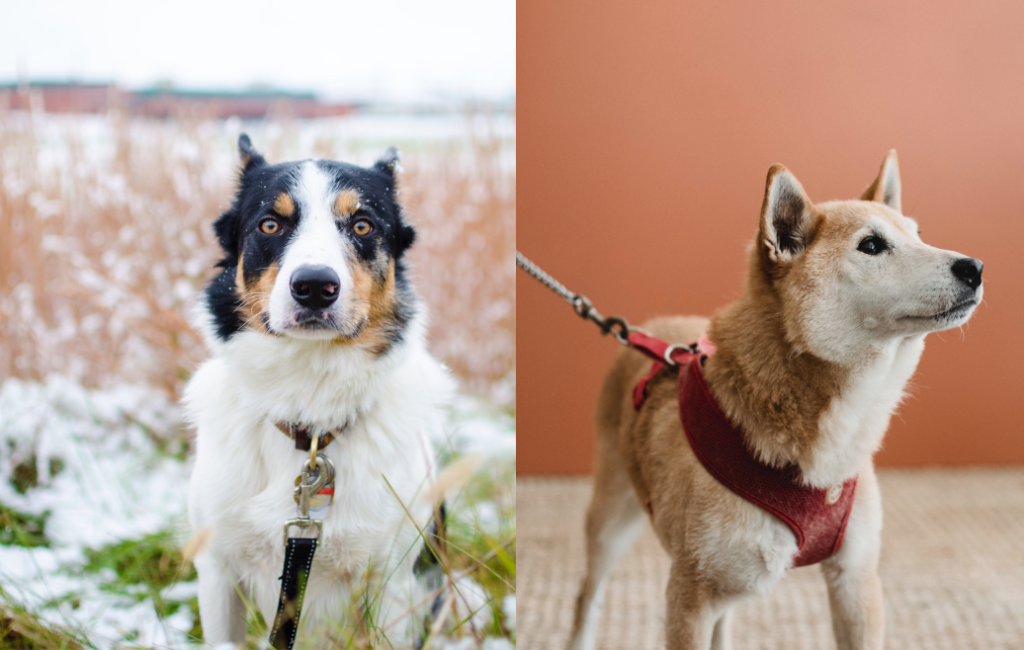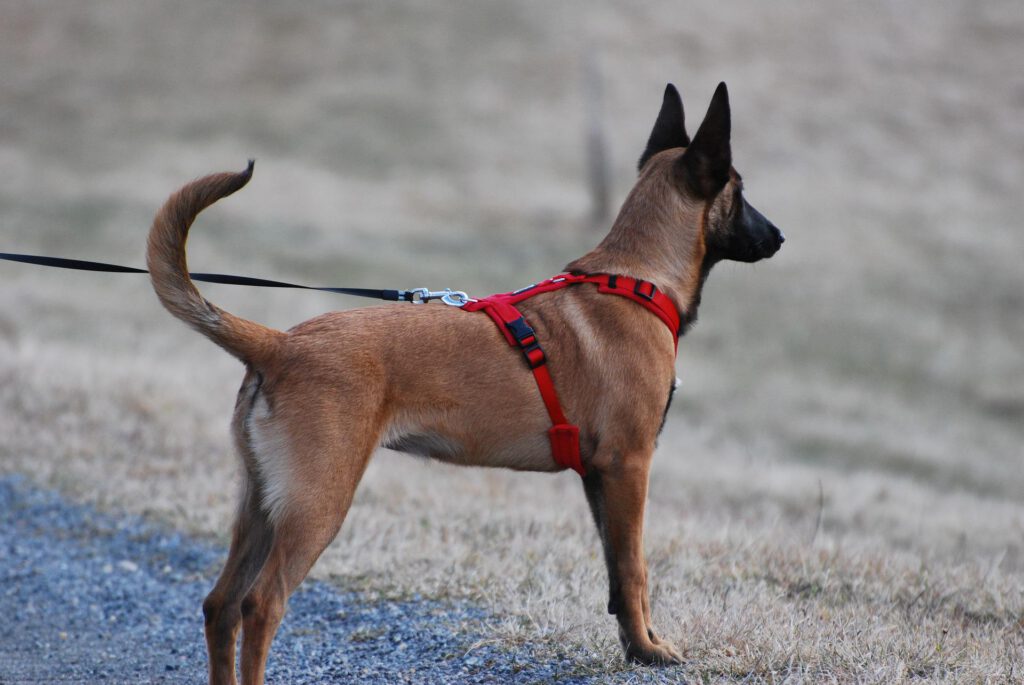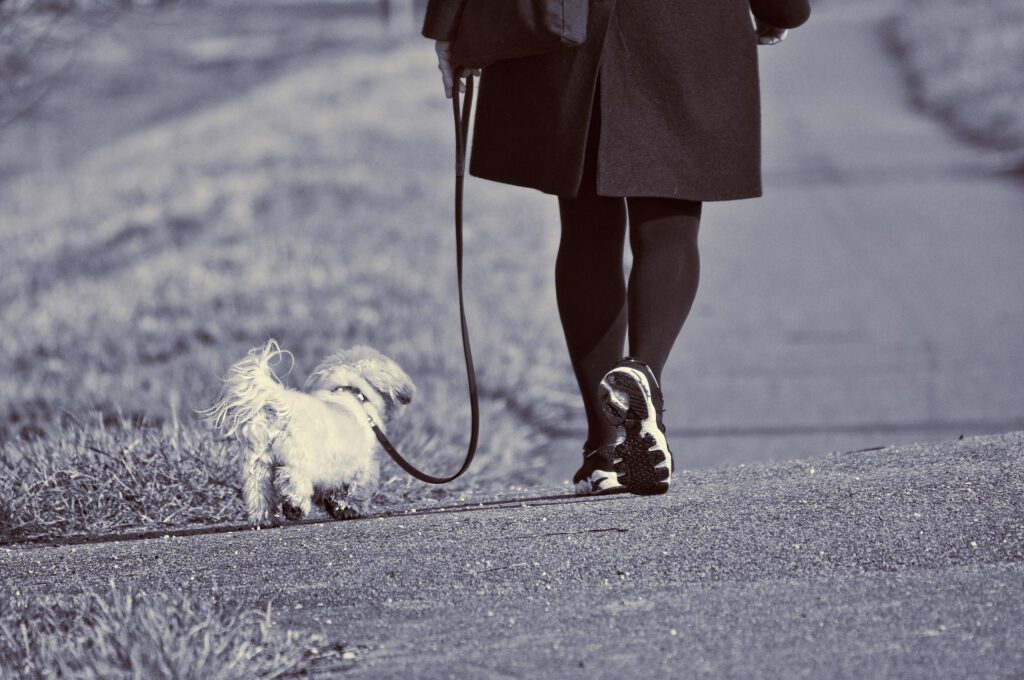
All dogs love going outside for a walk. As their owner, you know it’s important to make sure they are safely and securely attached to a leash. But which device is better for restraining your dog: a collar or harness?
In this article, we’ll discuss the pros and cons of each so that you can make an informed decision about which is best for your pup.
Collar
The beauty of the dog collar is its simplicity. A collar is essentially a strip of material that wraps around the dog’s neck. It usually contains a metal ring where a leash and ID tag can be attached.
Collars also have the advantage of low maintenance. They are easy and quick to put on, so your dog probably won’t have time to resist. You can also leave them on for long periods of time without causing discomfort or matted fur. In fact, some owners only remove the collar for bath time.
A collar is also a great way to express your dog’s unique style. They come in a variety of sizes and colors with eye-catching add-ons such as gems and spikes.
There is a downside to the collar’s simplicity, however. If you accidentally pull the leash too hard, or if your dog runs and hits the end of the leash, all of the pressure is focused on the dog’s throat and neck. This may cause whiplash or even a collapsed trachea.
Your dog may be smart and flexible enough to wriggle out of his collar. Many owners respond by tightening it. It’s too tight, however, the collar may cause hair loss and skin irritation. It may even cut into the dogs skin.
Collars are still a great choice though, especially for older dogs who have been properly leash-trained. Over time, you will develop an intuition for how to keep it tight enough for safety and loose enough to avoid injury.
Types of Collars
Flat
The flat collar is perhaps the simplest and most common type of collar that you will find at your local pet store. It wraps around the neck and is attached using a mechanism such as a quick-release clasp or metal buckle.
Slip
The primary purpose of a slip collar, also called “chain slip” or “choke chain”, is to discourage the dog from pulling. The collar tightens as the leash is pulled. In theory, the dog should learn to associate this unpleasant tightness with pulling and correct his behavior.
This style of collar is fairly controversial. In addition to medical issues caused by excessive tightening, many dog owners feel that the slip collar relies on unnecessary negative reinforcement for leash training.
Martingale
Some breeds such as greyhounds have small heads that can easily slip out of a standard collar. Martingale collars solve this problem by using two loops. The leash attaches to the smaller loop which tightens the larger loop as it is pulled.
If they are correctly adjusted, martingale collars should not become too tight, even when the dog is pulling. This makes it a safer option than the slip collar.
Prong
Prong collars consist of a collection of blunt prongs chained together by metal links. The collar is tightened as the dog pulls, causing the prongs to push against the skin and cause discomfort.
The design is similar to a martingale collar, having a small loop control the tightness of the large (pronged) loop. Prong collars are placed high on a dog’s neck, just behind the ears where the nerve endings are more sensitive.
Many dog owners find prong collars to be an effective training tool while others see them as cruel and unnecessary.
Head
Head collars have a design that is similar to a horse halter. It wraps around the dog’s neck and over the nose, providing more control over the dog’s direction than a standard collar.
One advantage of the head collar is a more even distribution of pressure. Most collars tighten against the throat, while the head collar spreads the pressure between the neck and head.
Harness
Unlike collars, dog harnesses do not focus pressure on the dog’s throat. Harnesses wrap around the dog’s chest and back.
When the dog feels resistance from the leash, the pressure is more evenly distributed throughout a greater portion of the dog’s body. This prevents injury for dogs who consistently pull too hard on their leash.
This means that the harness is a great choice if your dog is young and prone to pulling. It may prevent your pup from suffering a neck misalignment or pinched nerve. Just remember to have patience and give your dog time to adjust to the harness.
Also, you may be surprised at how easily a mischievous dog can escape from their collar by twisting their head. Harnesses are much harder to escape and therefore considered the safer option.
Keep in mind that harnesses are not meant to be worn all day and night. While they are relatively comfortable for short periods of time, they may cause some dogs’ hair to become matted or tangled if worn too long.

Types of Harness
Standard Clip
All standard harness share a common feature: they are pulled over the dog’s head and legs. Many standard harnesses are either “front-clip” or “back-clip”. These terms refer to the placement of the leash attachment.
Back-clip harnesses provide a ring on the dog’s back where the leash can be attached. This design is relatively simple and easy to set up. A front-clip harness has the ring on the dog’s chest. This position provides more control and is ideal for dogs that pull, but the owner sometimes needs to shorten and heighten the leash position to avoid tangled legs.
Step-In
Some dogs get anxious when a snug harness is pulled over their head. In these situations, a step-in harness is perfect. The unclasped harness is first laid on a table. Once your pup has stepped into the leg openings, you can simply pull it up and close the clasp on top.
Service
Service dogs are specially trained to help people with disabilities navigate through the world. These dogs often wear a certain type of harness. These harnesses often have practical features such as a reflective front strap and a handle for control, but many also have a “Service” label that signals the dog’s purpose to other people.
No-Pull
Some harnesses use mechanisms to prevent the dog from pulling. Similar to slip collars, no-pull harnesses become tighter as the dog pulls against the leash. This feedback mechanism is intended to discourage pulling and promote proper leash behavior.
Car Safety
The car safety harness is specially designed to keep your dog secure in a moving vehicle. This harness provides two functions:
- Prevent your dog from walking or jumping inside the car, which can be a dangerous distraction for the driver
- Provide restraint and minimize injury in a car accident
Most car safety harness have metal rings on the back that can be attached to the seat.
Comparison
Cost
On average, harnesses tend to be a bit more expensive than collars.
However, there are inexpensive and costly options for both. It depends mostly on the materials and design. For this reason, we don’t consider cost to be a major factor in the decision between a collar and harness.
Effectiveness
If the primary purpose of a restraint is training and safety, the harness is most effective at its job. Harnesses come in a variety of types, allowing you to prioritize convenience, control or training.
Safety
The harness is superior when it comes to safety. It allows for a more even distribution of pressure when the dog pulls, which reduces the likelihood of neck and throat injury. In addition, it is much harder for a dog to slip out of a harness.
Convenience
For most dog owners, collars are clearly more convenient than harnesses. They easy to put on and you can leave them attached for long periods of time. If your dog has long hair, collars have a smaller footprint that is less likely to cause tangles.
Quality
There is no substantial quality difference between any given collar and harness. You will find cheap, low-quality examples of both, as well as highly durable devices that are built to last a lifetime.
We encourage you to read the product reviews before purchasing. Many other pet parents are happy to testify to the long-term quality of their collar or harness.

FAQ
What kind of harness is best for a dog?
You should choose the type of harness that is best suited for your needs. Back-clip harnesses are easier to attach, while front-clip harnesses provide more control while the dog is pulling. A no-pull harness is great for leash training. Car safety harnesses are ideal for keeping your pup safe during car rides.
At what age can I put a harness on my puppy?
Most puppies can start wearing a harness when they are 8 weeks old. This may also depend on the breed and the size of your harness. Puppies will generally need time to adjust to the routine of walking while leashed.
Are harnesses better than collars?
Harnesses may be less convenient than collars, but they are more secure and are less likely to cause injury. However, this also depends on your dog’s behavior. If your dog is leash-trained and is not prone to pulling, he should have no problem wearing a collar.
Do dogs need both a collar and a harness?
Dogs do not necessarily need both a collar and a harness. Your job is to make sure they are restrained when it is necessary for safety and/or required by law. They should also have an ID with their owner’s contact information in case they are lost. These features are offered by both collars and harnesses.
Conclusion
Every dog owner wants to make sure their pup is safe and comfortable on a leash when they go for a walk. As we’ve seen in this article, both harnesses and collars can be an effective way to perform these functions. We encourage you to further research your options and choose the restraint device that is best for you and your dog.